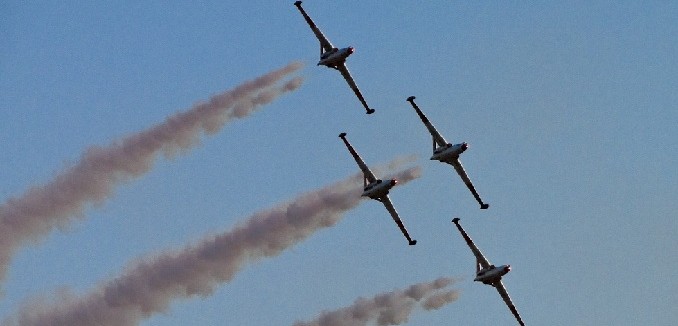Reports are trickling out of the Middle East that Israeli Air Force jets Friday morning conducted a pin-point strike on a target in southern Lebanon, less than a day after four rockets were fired at Israel out of the Hezbollah-dominated region.
A statement by the Israeli Defense Forces described the target as “located between Beirut and Sidon” and reiterated that the Israeli government holds the Lebanese government responsible for attacks emanating from within Beirut’s sovereign borders. Social media reports from Lebanon placed the incident more precisely in the Na’ameh area, and Reuters also quoted an Israeli military source locating the terror site in Na’ameh.
The Lebanese Armed Forces had began withdrawing from areas in southern Lebanon last spring, creating a power vacuum that analysts predicted at the time would be filled in by terror groups.
Experts are divided as to the source of the Thursday rocket fire that prompted Israel’s actions.
The IDF linked the attack to a “global jihad” group. In the context of Lebanon, the IDF statement implied that the Abdullah Azzam Brigades (AAB) – a Sunni jihadist group designated as a Foreign Terrorist Organization by the U.S. State Department – was responsible. The AAB, which in addition to targeting Israel has threatened Hezbollah with attacks for battling in Syria on behalf of the Bashar al-Assad regime, later issued a statement claiming the attack.
U.S.-based analysts, however, expressed skepticism that any jihadist group aligned against Assad could operate with sufficient freedom in Hezbollah-controlled areas to carry out the attack. Instead there are scenarios suggesting that Hezbollah was directly responsible. The Iran-backed terror group has an arsenal of tens of thousands of missiles targeting Israel – including advanced missiles – and top Hezbollah officials threatened a few days ago to saturation bomb Israeli population centers. The group had earlier erected banners along the border threatening Israel that “we are coming,” and has been militarizing both southern Lebanon and its Beirut strongholds.
The Na’ameh area targeted by the IAF in reaction to the rocket fire contains military facilities controlled by the Popular Front for the Liberation of Palestine-General Command (PFLP-GC). The PFLP-GC is aligned with the regime in Syria – and therefore at least nominally with Hezbollah – and was activated by Assad earlier this year to attack Israel. PFLP involvement in Thursday’s rocket launch would account for the location of the rocket launch, but arguably not for why the Israelis would neglect to target Hezbollah assets.
The debate over the source of the rocket fire will be read against a general deterioration of security in southern Lebanon. Alongside the LAF’s withdrawal, Hezbollah has begun pointedly threatening the U.N.’s peacekeeping force along the Israeli-Lebanese border. E.U. contributors have threatened to withdraw their troops due to the environment.
[Photo: Flavio~ / Flickr]




